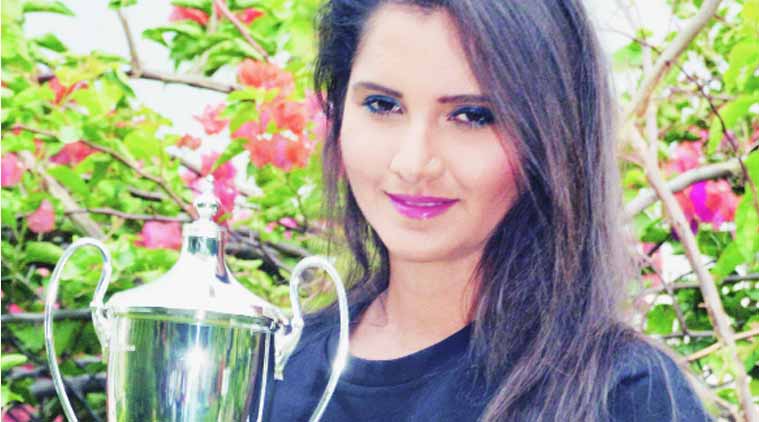Sania Mirza, shining like a diamond
Sania Mirza has had an outstanding 2015, a year in which she became No.1 doubles players and also won the Wimbledon women's doubles title.
 Sania Mirza won the 2015 Wimbledon doubles title with Martina Hingis.
Sania Mirza won the 2015 Wimbledon doubles title with Martina Hingis.
Abhinav Bindra, Saina Nehwal, Gagan Narang and MC Marykom were all conferred with India’s highest honour for achievement in sports — the Khel Ratna, well before they secured the coveted Olympic medal. Because setting sights on impossible targets and streamlining her efforts in pursuit of such dreams as the Olympics is right up her alley, you can safely say that Sania Mirza may well join the list next year when Rio de Janeiro fetches up. If anyone can soak up that sort of pressure of a gauntlet being thrown down at them a year ahead of the big-date, it is her.
The Khel Ratna has seen some almighty sulks and bitter wranglings in the lead-up days to its announcements, in the past years. But on the back of her march to World No 1 on the doubles charts and a historic women’s doubles title at Wimbledon this summer, Sania Mirza can be said to have been a unanimous choice this year, after the reccomendation came straight from the Sports Minister.
[related-post]
For controversy’s favourite girl-child, this 2015 honour is resoundingly non-controversial. Based purely on a stupendous year of consistent high-level athletic achievement globally, and following 15 years of fighting all sorts of odds flung in her path, Sania Mirza can finally claim this year as her own, tell herself she was India’s top sportsperson. Then she can keep safe the Khel Ratna medallion, Rs 7.5 lakh and certificate, and quickly move on to attempt to conquer the US Open.
The recurrent theme of the Hyderabadi girl’s career has been resurgence: her ability to quickly shrug off each setback and get ready next day, to do battle. Day after day, year after year, for fifteen seasons. Mirza was never destined to give up, though she dumped moonballing furiously when she chose the blistering forehand.
Mirza was never prone to being bogged down, though she could put her head down and accumulate 28 Tour titles, apart from the four Grand Slam wins. Tennis and the globetrotting expeditions its pros undertake are as individual as a sport can get, but Mirza’s chipped in with 14 medals at multi-discipline Games including six gold, and no one can say the tricolour’s not fluttered, proud and high, in the background each time the 28-year-old’s stepped on the court. If there is one quibble against Mirza it’ll be that all this is achieved in doubles not singles.
But if it was such a lark to turn up and win a Grand Slam while manning half the court, why hasn’t any other Indian — after Paes, Bhupathi and Mirza — ever stepped up and delivered?
A tremendous inspiration to other Indian girls wielding the racquet and firing away forehands, Sania Mirza’s uniqueness lies in the fact that none’s come remotely close to achieving what she did even a decade after she claimed her marquee wins in singles against Svetlana Kuznetsova, Nadia Petrova and Martina Hingis. It’s not like the women’s doubles circuit is teeming with young, spunky Indians either.
But the Khel Ratna, despite its complex system of marks addition and formulae, ought not to be a reductive summation of titles lost and championships won. Sania Mirza’s credentials extend beyond the statistics and are frankly even beyond the realm of providing inspiration to other Indians. The outrageously talented Indian has spoken out when she needed to, taken on the prevalent order and done all this while being a grand ambassador for India and its sporting community. Known as much for her professionalism as her easygoing nature and warmth, Sania Mirza is one of the most popular players on the circuit — a truly international icon in what is the most global sport.
Parents would want their girls to grow up to be as confident and poised as Sania Mirza, and the fact that there’s no ready successor on the horizon and no one who can be dubbed the next-Sania Mirza, cannot be a burden loaded on her shoulders.
Sania Mirza proves that the “system” is incidental to high-level achievement. India would be fortunate if facilities and infrastructure, scientific knowledge and excellent coaches, monetary backing and mentoring expertise suddenly materialised — like, in an ideal world.
But in the absence of that utopian set-up, there is still a Sania Mirza, a girl from Hyderabad who loved tennis enough to make it her life’s mission, and who refuses to give up and chases that tennis dream that could in a year’s time yield an Olympic medal.
India’s highest honour for achievement in sports — the Khel Ratna, would act as a fine prompter. Tennis, meantime can celebrate this centrestage — only the second player after Leander Paes — and make up for the one who slipped through the cracks: Mahesh Bhupathi, Sania Mirza’s mentor.

































